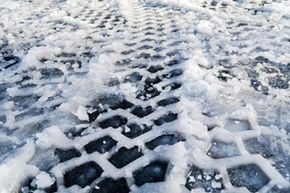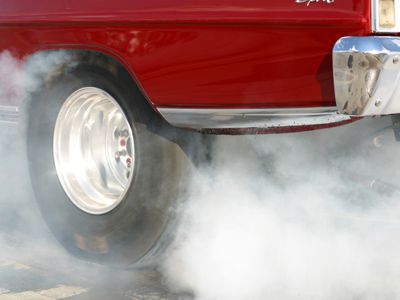I don't know about you, but "Zamboni driver" was never high on my list of dream careers. It's not that I don't like hockey or figure skating, it's that I don't like driving on ice. Give me a few feet of snow over half an inch of ice on the roads any day. Anyone who has ever felt the sickening feeling that comes when the car they're driving or riding in hits a patch of ice and loses control can probably sympathize with me.
Some of you are probably wondering why I hate driving on ice so much. After all, today's sophisticated cars have all-wheel-drive systems. Surely all-wheel drive helps cars handle better on ice, right?
Advertisement
First, let's take a look at how all-wheel drive works. While front- or rear-wheel drive cars send all their power either to the (drumroll please...) front or rear wheels, all-wheel-drive cars can send power to the wheels that have the most traction. When the all-wheel-drive system senses that a wheel has lost traction, it cuts power to the wheel and sends additional power to the wheels that do have traction. It's a great system for starting from a complete stop on muddy, snowy, wet and, yes, even icy roads where other cars might spin out.
The key component to how well an all-wheel-drive car (or any car, for that matter) drives is the amount of traction each wheel has. Traction is the amount of friction between surfaces. Think about how new sneakers feel on a gym floor. They stick and squeak on the shiny wood surface, allowing for fast acceleration and quick direction changes. Now, picture doing those same maneuvers on ice. It doesn't go so well, does it?
Sneakers are to us what tires are to our cars. And even with the best sneakers on, we're not going to find a lot of traction on ice. Neither is your car. All-wheel drive may help a car get rolling on roads with patchy ice (because few of us are likely to ever drive on an actual ice rink), but when it comes time to stop and turn, all-wheel drive is no help.
Specialized tires are the main thing that can help drivers who often drive on ice. These tires act like cleats, digging into the surface and allowing for more secure driving. But most people don't drive on ice enough to justify ice tires. Staying home during an ice storm is really your best option, even if you have all-wheel drive. And if you absolutely have to go out, drive slowly, leave plenty of following distance, avoid abrupt changes in direction and let us all know how your Zamboni driving exam goes.
Advertisement


